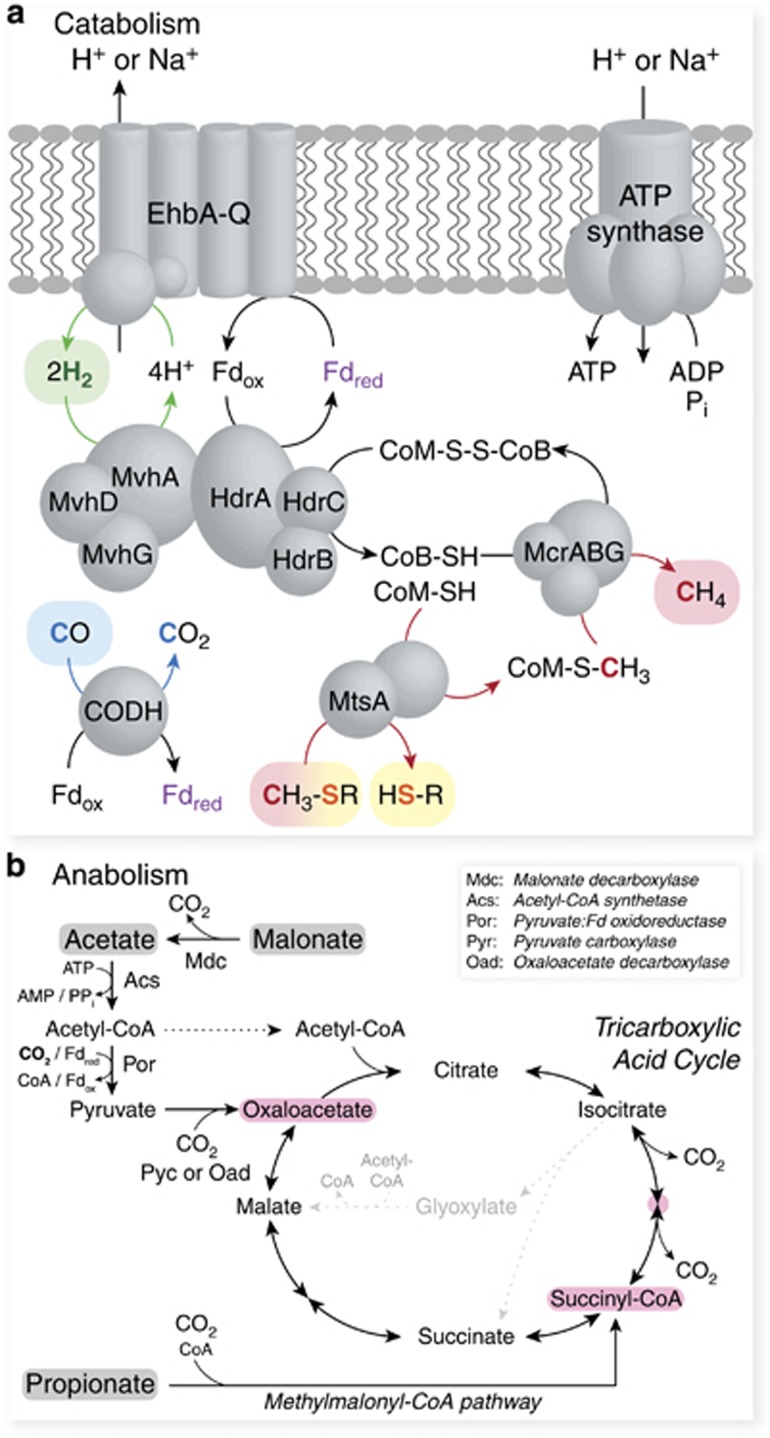Figure 3.
WSA2 (a) catabolism and (b) anabolism. (a) WSA2 has genes for H2 oxidation through electron-bifurcating hydrogenase (HdrABC–MvhDGA) and H2 cycling by energy-converting hydrogenase (EhbA-Q); CO oxidation by carbon monoxide dehydrogenase (CODH); and methylated thiol reduction and methanogenesis by methylated thiol Coenzyme M methyltransferase corrinoid fusion protein (MtsA) and methyl coenzyme M reductase (McrABG). The proton motive force (or cation gradient) generated by Ehb can support ATP production by ATP synthase. (b) Malonate decarboxylase and acetyl-CoA synthetase can convert malonate and acetate into acetyl-CoA for downstream co-assimilation with CO2 (bolded) through pyruvate:ferredoxin oxidoreductase, pyruvate carboxylase and tricarboxylic acid (TCA) cycle. As identified for other heterotrophic methanogens, WSA2 does not encode the glyoxylate shunt for acetate assimilation (gray with dotted line). The methylmalonyl-CoA pathway can facilitate co-assimilation of propionate and CO2 also into the TCA cycle. WSA2 can use key TCA cycle intermediates (pink) as building blocks for biosynthesis.

